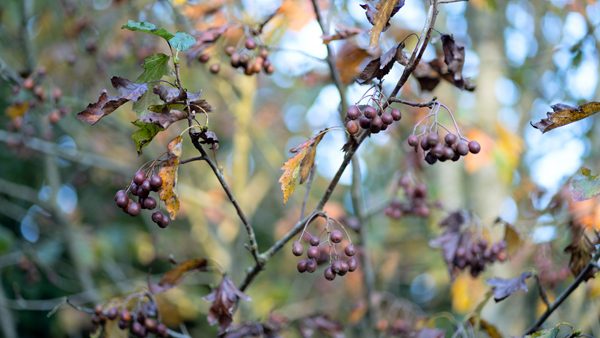I’ve spent many years researching and writing about the uses people make of plants
and what plants mean to the people who use them.
There is a summary of my work and some of the projects I’ve been involved in here

Wild Service Tree - Sorbus torminalis Photo: © Aaron Parker
An indicator of ancient woodland and hedgerows, particularly associated with England's southern Weald, the wild service tree is now rare in the wild but was once particularly
appreciated for the extraordinary bounty it provides in Autumn, as its small greenish-bronze fruits that hang in clusters, soften to become deliciously sweet. With a date-like
taste that's been described as 'not quite like anything else that grows wild in this country, with hints of apricot, sultana, overripe damson and tamarind, and a lightly gritty
texture'*, ripe wild service fruits were a staple in Neolithic times and popularly eaten as a sweet treat where they were available until relatively recently.
Sold in the mid 19th C in shops and markets, often to children, they were also hung up indoors in strings for home consumption or used to make or flavour alcoholic drinks.
Developing a patterning of small, pale-coloured spots as they ripen in mid Autumn, the fruit and the trees were commonly known as 'chequers', a name also given to a number
of pubs in southern England, many of which have or had wild service trees growing in their gardens or nearby. A chequer board sign was often hung outside pubs however, and
although it seems likely, it is not clear whether the wild service tree is indeed the origin of this name.
Birds such as mistle thrushes and pigeons are particularly fond of ripe wild service tree berries.
* R. Mabey, Flora Britannica, Chatto & Windus, 1997, p205



